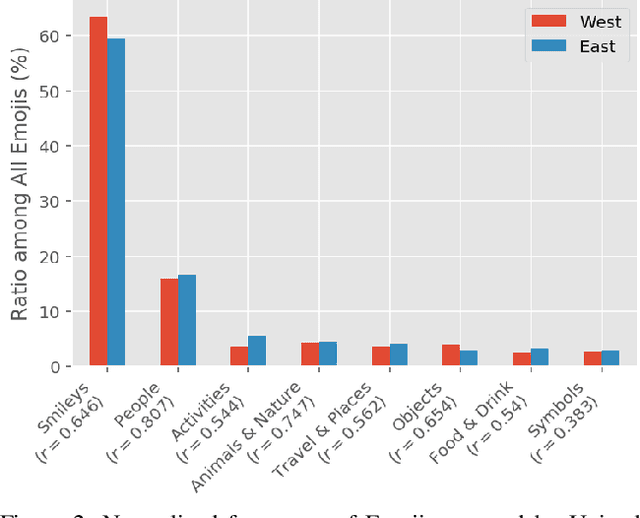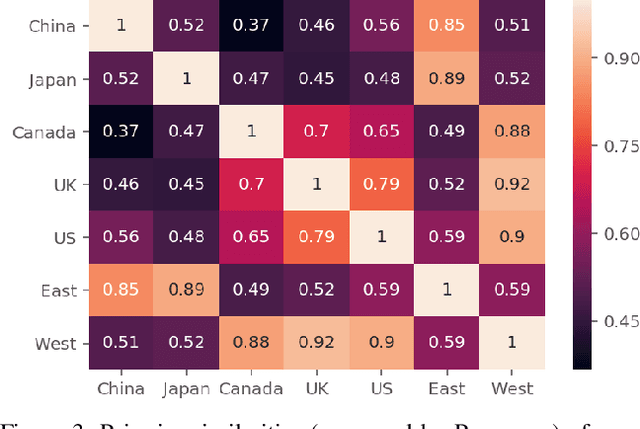Studying Cultural Differences in Emoji Usage across the East and the West
Paper and Code
Apr 04, 2019



Global acceptance of Emojis suggests a cross-cultural, normative use of Emojis. Meanwhile, nuances in Emoji use across cultures may also exist due to linguistic differences in expressing emotions and diversity in conceptualizing topics. Indeed, literature in cross-cultural psychology has found both normative and culture-specific ways in which emotions are expressed. In this paper, using social media, we compare the Emoji usage based on frequency, context, and topic associations across countries in the East (China and Japan) and the West (United States, United Kingdom, and Canada). Across the East and the West, our study examines a) similarities and differences on the usage of different categories of Emojis such as People, Food \& Drink, Travel \& Places etc., b) potential mapping of Emoji use differences with previously identified cultural differences in users' expression about diverse concepts such as death, money emotions and family, and c) relative correspondence of validated psycho-linguistic categories with Ekman's emotions. The analysis of Emoji use in the East and the West reveals recognizable normative and culture specific patterns. This research reveals the ways in which Emojis can be used for cross-cultural communication.
 Add to Chrome
Add to Chrome Add to Firefox
Add to Firefox Add to Edge
Add to Edge